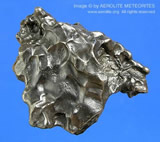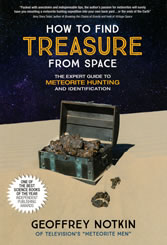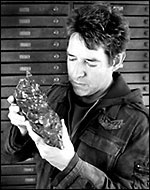Home » Meteorites » Impactites
 Illustration by Timothy Arbon
Illustration by Timothy Arbon
IMPACTITES - GHOSTLY FOOTPRINTS OF ANCIENT METEORITES
With information about diamonds in the Popigai Crater of northern Siberia
The fifth in a series of articles by Geoffrey Notkin, Aerolite Meteorites
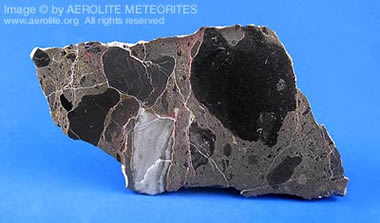
Alamo Breccia: A polished end section of impact breccia from the Alamo site in central Nevada. Alamo is described as a wet impact, meaning the meteorite crashed into water—in this case a warm shallow sea, rich in coral. Note the angular fragments which have been shattered by the force of impact. The white inclusion, bottom left, is fossilized coral from the ancient reef. The Alamo impact occurred approximately 370 million years ago and breccias are believed to cover 100,000 square kilometers. During the intervening millennia, geological processes have raised and eroded the old impact site, so rocks that once lay at the bottom of a vast submarine crater are now to be found on bleak mountaintops. Specimen pictured is approximately 13 cm x 9 cm. Photograph by Geoffrey Notkin, copyright Aerolite Meteorites. Click to enlarge.
What are Impactites?
Many years ago, my friend Derek Yoost—a noted paleontologist and meteorite collector—gave me a small polished slice of an impact breccia from France. It was my first in-person encounter with an impactite and I was immediately fascinated.
Meteorites are fragments of cosmic debris, usually rich in extraterrestrial iron and nickel, which have survived a fiery passage through Earth’s atmosphere and landed upon the surface of our planet. Small meteorites, slowed by the effects of atmospheric breaking typically make shallow indentations in the ground known as impact pits; larger meteorites may form craters, while the most massive—and we are talking about building-sized space rocks at the very least—can produce gigantic impact features known as astroblemes, a word derived from the Greek for “star wound.”
If a meteorite strike is large enough to form an astrobleme it radically deforms the rocks, sand, or soil around the point of impact. The terrestrial materials near, or beneath, an impact site are described as target rock. These terrestrial rocks, physically altered by the tremendous heat, pressure and shock waves associated with very large meteorite impacts, are known as impactites.
Usually only the very largest crater-forming events generate the energy required to melt, fragment, or even vaporize terrestrial rocks. Luckily for the inhabitants of planet Earth such events are extremely rare and most known impactites are relics of meteoritic strikes from the distant past.
Recent cratering events took place when a stone meteorite landed in 2007 in Carancas, Peru, and in 1947 when a shower of iron meteorites fell near Russia’s Sikhote-Alin mountains, but neither were of the scale required to form significant impactites.
Impact breccias have been found at the Henbury craters in Australia (approximate age 3,000 years) and the 25,000 year-old Meteor Crater in Arizona. Since these are among the youngest impactites known, their ages give us an idea of the great span of time between major crater-forming impacts.

Alamo breccia outcrop: An imposing outcrop of the Alamo Breccia near the town of Rachel in central Nevada. Note the irregular shapes of the fragments within the breccia. The rusty looking elements are fossil stromatoporoids—extinct sponges that once lived on the reef which was hit by a crater-forming meteorite. A geologist's pick is included for scale. Photograph by Geoffrey Notkin, copyright Aerolite Meteorites. Click to enlarge.
How Are Impactites Formed?
In the summer of 1945 when the United States detonated the world’s first atomic bomb at the Trinity test site in New Mexico, the intense heat generated by the explosion fused desert sand into a frothy green glass known as trinitie.
Meteorites of sufficient size and mass impacting upon the earth’s surface can have a similar effect. Catastrophic impacts literally transform surface material into new rock types. If we are to use strict geological definitions it should be noted that since they have been altered by heat and pressure, impactites are a type of metamorphic rock.

Libyan Desert Glass: An extraordinary highly translucent 239.1-gram Libyan Desert Glass individual covered in pseudo regmaglypts, which are strikingly similar in appearance to the thumbprints found on certain meteorites. Some impact specialists have theorized that at the time of impact, molten jelly-like blobs of desert glass were thrown far up into the air, and then fell back to earth acquiring regmaglypts in the process. A more widely accepted view is that pseudo regmaglypts are the result of long term desert erosion by wind and sand. However they are formed, their resemblance to meteoritic regmaglypts is remarkable. Photograph by Leigh Anne DelRay, copyright Aerolite Meteorites. Click to enlarge.
Impactites: Some of the Main Groups
Since impactites consist primarily of deformed terrestrial material (sometimes containing small preserved remnants of the original meteorite) they are predominantly a product of the target rock present at the time of impact. Sand can melt into impact glasses such as Libyan Desert Glass and Darwin Glass; rocks may be shattered and compressed into breccias such as suevite that contain minerals formed at high pressure—the Nördlinger Ries crater in Germany provides excellent examples.
Tagamite is an impact melt rock which looks somewhat similar to terrestrial basalts, and is named after the Tagamy ridge within Siberia’s Popigai crater. Shatter cones occur in bedrock beneath the point of impact and have been deformed by shock waves. Tektites such as moldavite and Indochinites are dark glassy objects found in four large country-spanning strewnfields and are likely associated with very large and very ancient impacts.
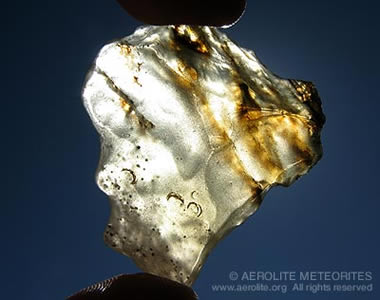
Libyan Desert Glass: A small but spectacular 13.1-gram Libyan Desert Glass specimen. The dark stripes are dust imprisoned within the glass. Recent studies have shown that some of these dust fragments are remnants of the original meteorite. Photograph by Leigh Anne DelRay, copyright Aerolite Meteorites. Click to enlarge.
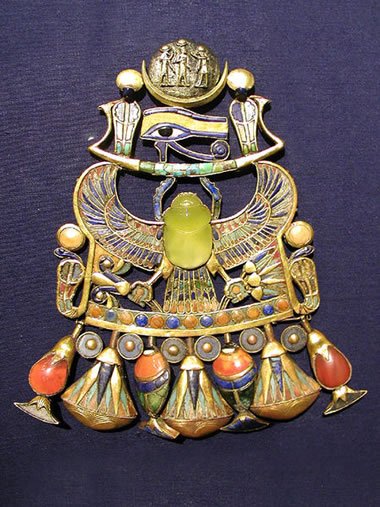
King Tutankhamun's Desert Glass: Over 3300 years ago, the ancient Egyptians knew about Libyan Desert Glass and held it in high regard. The pendant shown above was one of several buried with King Tutankhamun (King Tut), an Egyptian pharaoh of the 18th Dynasty who ruled between 1332 and 1323 BC. The yellow center stone is a superb piece of Libyan Desert Glass, used as the dominant gem in this pendant. Photograph by Jon Bodsworth, found at the Wikimedia Commons. From the Gems from Space article on Geology.com.
Libyan Desert Glass:
Tutankhamun's Cosmic Gemstone
Perhaps the most alluring and beautiful of all impactites is Libyan Desert Glass, found in only one place on earth near the Libyan/Egyptian border. The formation event for this clear, honey-colored glass has been dated to about 29 million years, although no associated crater has been positively identified.
Libyan Desert Glass was first recognized by modern science in the 1930s, but early humans fashioned it into tools during the Pleistocene era, and the ancient Egyptians were entranced by the yellow glass—a delicate scarab mounted in one of Tutankhamun’s ornate pectorals was carved from it.
Erosion by wind and sand has sculpted some pieces into startling shapes, and etched their surfaces with pseudo regmaglypts that bear an uncanny resemblance to the thumbprints found on meteorites. Some specialists theorize that at the time of impact, molten fragments of Libyan Desert Glass were thrown far up into the air, later falling back to earth and themselves becoming meteorites. New research has shown that some specimens contain tiny dust-like particles of the original meteorite, frozen forever in natural glass.
Collecting at the site is, today, prohibited by the Egyptian government, and high quality specimens are prized by collectors for their beauty, color, shape, and translucency.
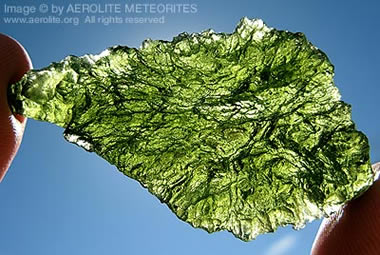
Moldavite: A very high quality 86.5-carat moldavite specimen from the Czech Republic. The rich bottle-green color is typical of moldavites and they are the most colorful of all impactites. Note the delicate feathering on the surface which is likely the result of long term erosion by water, while the specimen lay buried. Extensive mining in the Czech Republic has largely depleted the supply of moldavites, and it is unusual to see pieces of this size and quality in today's marketplace. Photograph by Leigh Anne DelRay, copyright Aerolite Meteorites. Click to enlarge.
| Meteorite Identification |
| If you would like to learn about meteorite identification, and discover how to perform some simple tests at home, please visit The Aerolite Guide to Meteorite Identification. Meteorites are very valuable both to the scientific community and to enthusiastic collectors. So, if you think one landed in your backyard, be sure to get it checked out! |
Moldavites: A Mysterious Green Glass with Mystical Powers?
As a scientist I am not sure I quite believe in the “mystical powers” of certain stones and crystals, but many people do. Once, while working at a gem show in Springfield, Mass., an elegant lady meticulously examined every one of our moldavite specimens, pressing each in turn to her forehead to “measure the energy” they contained. “Oh this one is very powerful,” she whispered to her enthralled daughter.
It is easy to see why gem enthusiasts and spiritualists are enamored by these ethereal stones. Moldavites are a type of tektite and specimens are a rich emerald or olive green color, highly translucent, and often button or teardrop shaped. The most desirable examples display a remarkable fluted or feathered surface that may have been caused by long-term water erosion. Most moldavites are modest in size and it is unusual to see specimens larger than about twenty grams.
Moldavites are found in a relatively small area incorporating Bohemia and Moravia in the Czech Republic, and may have been formed during the 15 million year-old impact at Nördlinger Ries in Germany. With a hardness rating of 5.5 and a beguiling green hue, moldavites are frequently used in jewelry and for carving small cameos and figurines.

Popigai Breccia: A large 457.7-gram specimen of breccia from the massive Popigai crater in northern Siberia. Note the variety of colors, sizes, shapes and textures within a single mass—the result of a major meteorite impact which threw millions of tons of rock into the air. As fragments fell back to earth, rocks from different strata were mixed together. Millions of years of heat and pressure compressed those assorted pieces into a solid mass known as an impact breccia. Photograph by Geoffrey Notkin, copyright Aerolite Meteorites. Click to enlarge.
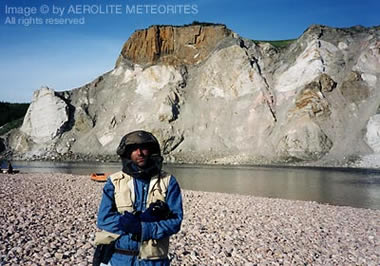
Popigai Breccia Exposure: The author inside Siberia's Popigai crater during the 1999 expedition. We were camped on a small pebble island in the Rassokha river; the imposing cliff in the distance is hundreds of feet high and known as "The Painted Rocks." Almost the entire cliff face is impact breccia, and some of the rocks within the composite weigh many thousands of tons. "The Painted Rocks" is one of the most spectacular impactite exposures in the world. We visited the site during the Arctic summer and were constantly harassed by aggressive Siberian insects, hence the mosquito netting. Photograph by Rusty Johnson, copyright Aerolite Meteorites. Click to enlarge.
Popigai: Meteoritic Diamonds from the Arctic Circle
In 1999 I was invited by Dr. Roy Gallant—noted author, astronomer and adventurer—to join him on a thrilling expedition to one of the largest and most remote meteorite craters on earth.
The Popigai crater is situated at the northern edge of Siberia, on the Tamyr Peninusula, far north of the Arctic Circle. Approximately 100 km in diameter, the crater is completely inaccessible by land or sea, and our team was airlifted inside it by ex-military helicopters.
Popigai’s remoteness is not the only obstacle the would-be visitor encounters. For decades, the crater produced industrial grade diamonds, mined by political prisoners, and used by Russian industry for military applications. A special invitation from the KGB was required to allow our American team into the restricted area.
For decades geologists believed that Popigai diamonds were the result of volcanic activity, but the eminent Russian geologist and impact specialist Dr. Victor Masiatis eventually proved that the enormous crater is all that remains of a meteorite, estimated to have been between 5 and 8 km in diameter, which struck our planet 35 million years ago.
In addition to diamonds, the Popigai crater gives us superb examples of impact breccias. The most common definition of a breccia is “a rock made of smaller rocks cemented together.” In other words, breccias consist of rocks that have been broken up or altered by volcanic activity, landslides or other geological processes, and then cemented back together over time. Breccias often contain rocks from several different sources, and impact breccias are an especially good example of this phenomenon.
If a meteorite is large enough, and traveling at sufficient velocity when it collides with the surface of our planet, an explosive event occurs which forms a crater. Large amounts of debris—in the case of the Popigai crater millions of tons of it—are thrown into the air. This debris typically represents rocks from different strata and when the fragments fall back to earth, in and around the crater, they do so in a random fashion. Rocks from varying layers and time periods come to rest next to each other and slowly become cemented together into an impact breccia. Because of the violent way in which they were formed, impact breccias typically consist of sharp angular fragments, in contrast to terrestrial conglomerates that contain rounded clasts.
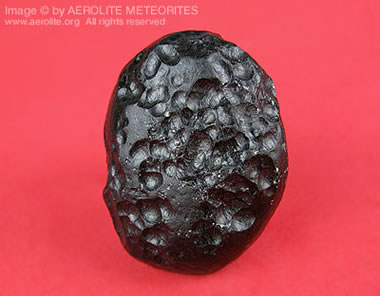
Tektite: An excellent example of an Indochinite tektite from Southeast Asia. This 48.7-gram specimen is 48 mm x 35 mm x 21 mm in size. The shiny, glassy surface is natural, and similar in appearance to obsidian which is a terrestrial igneous rock. Note the small crater-like features on the surface of this specimen, which are reminiscent of regmaglypts found on meteorites. Photograph by Leigh Anne DelRay, copyright Aerolite Meteorites. Click to enlarge.
Tektites:
The World's Largest Strewnfields
Of all impactites, tektites are probably the most familiar to the average rockhound. Commonly seen at gem and mineral shows worldwide, tektites are usually black and glassy, quite similar in appearance to terrestrial obsidian, but with tiny crater-like features on their surfaces. They appear in a variety of shapes including spheres, drops, buttons, and even dumbbells.
|
The most abundant are Indochinites, which are found scattered over what is probably the world’s biggest strewnfield, encompassing parts of China, Thailand, and Cambodia.
A once-popular theory held that tektites were formed by volcanic eruptions on the Moon: molten material exploded into space and later landed here. Today, most specialists agree that tektites are the progeny of meteorite impacts on Earth. Bediasites and Georgiaites from the USA are believed to be associated with the Chesapeake Bay impact crater; as noted above moldavites may be from the Nördlinger Ries crater in Germany, and the one million year-old Lake Bosumtwi crater in Ghana is the likely birthplace of exceedingly rare Ivory Coast tektites. So far, no source craters for the Indochinites and Chinites of Asia, or the Australites of Australia have been identified.
Please see Meteorite.com for an excellent feature on tektites, including strewnfield maps and photographs of outstanding specimens.
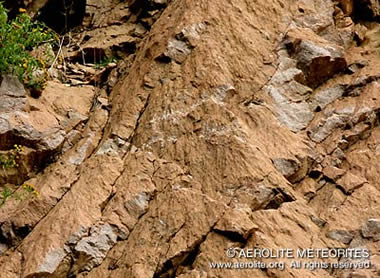
Shatter Cone: The recently discovered shatter cone exposure near Santa Fe, New Mexico. As shock waves from an ancient meteorite impact traveled downwards into the ground, they formed waves of fractures in the bedrock. The rock face pictured once lay underground, below the actual point of impact, but is now raised hundreds of feet above the surface. Note the radiating conical shapes within the rock, which are typical of shatter cones. Photograph by Geoffrey Notkin, copyright Aerolite Meteorites. Click to enlarge.
Shattercones: What Lies Buried Beneath the Crater?
Shatter cones are one of the most unusual and intriguing features related to meteorite impacts. They are sections of bedrock from beneath a meteorite crater that have been deformed by powerful shock waves radiating down into the ground. This shocking is believed to be the origin of networks of delicate fractures which flow across shatter cones in conical patterns reminiscent of a horsetail. Since shatter cones formed deep underground, exposures are only visible if they have been uncovered by natural erosion, or human activity, such as mining. A spectacular exposure was recently discovered near Santa Fe, NM (see photo).
| Meteorwritings Menu |
Ghosts of Meteorites Past
As most meteorites are rich in iron, they will decompose over time in our moist atmosphere. The impactors that formed Earth’s most impressive astroblemes such as Popigai, Manicouagan (Canada), and Chicxulub (Yucatan, Mexico) have long since vanished—rusting and disintegrating over the millennia. Breccias, melt glasses, and shatter cones survive as footprints left by these cataclysmic world-changing meteorites. The study of impactites can help shed light on our planet’s violent past and give us clues to the momentous impacts that helped shape the world we know today. The vast craters where impactites are found should also remind us that Earth is still a target and will likely again be the victim of major meteorite impacts in the future.
Geoff Notkin's Meteorite Book
|
About the Author
|
Geoffrey Notkin is a meteorite hunter, science writer, photographer, and musician. He was born in New York City, raised in London, England, and now makes his home in the Sonoran Desert in Arizona. A frequent contributor to science and art magazines, his work has appeared in Reader's Digest, The Village Voice, Wired, Meteorite, Seed, Sky & Telescope, Rock & Gem, Lapidary Journal, Geotimes, New York Press, and numerous other national and international publications. He works regularly in television and has made documentaries for The Discovery Channel, BBC, PBS, History Channel, National Geographic, A&E, and the Travel Channel.
Aerolite Meteorites - WE DIG SPACE ROCKS™
| More Meteorites |
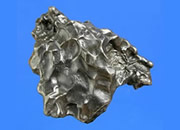 |
What Are Meteorites? |
 |
Extraterrestrial Gems |
 |
Gifts That Rock |
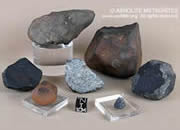 |
Collecting Meteorites |
 |
Moldavite |
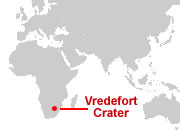 |
The Vredefort Crater |
 |
Mars Meteorites |
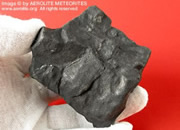 |
Meteorite Identification |

Find Other Topics on Geology.com:

|

| ||

|

| ||

|

| ||

|

|

